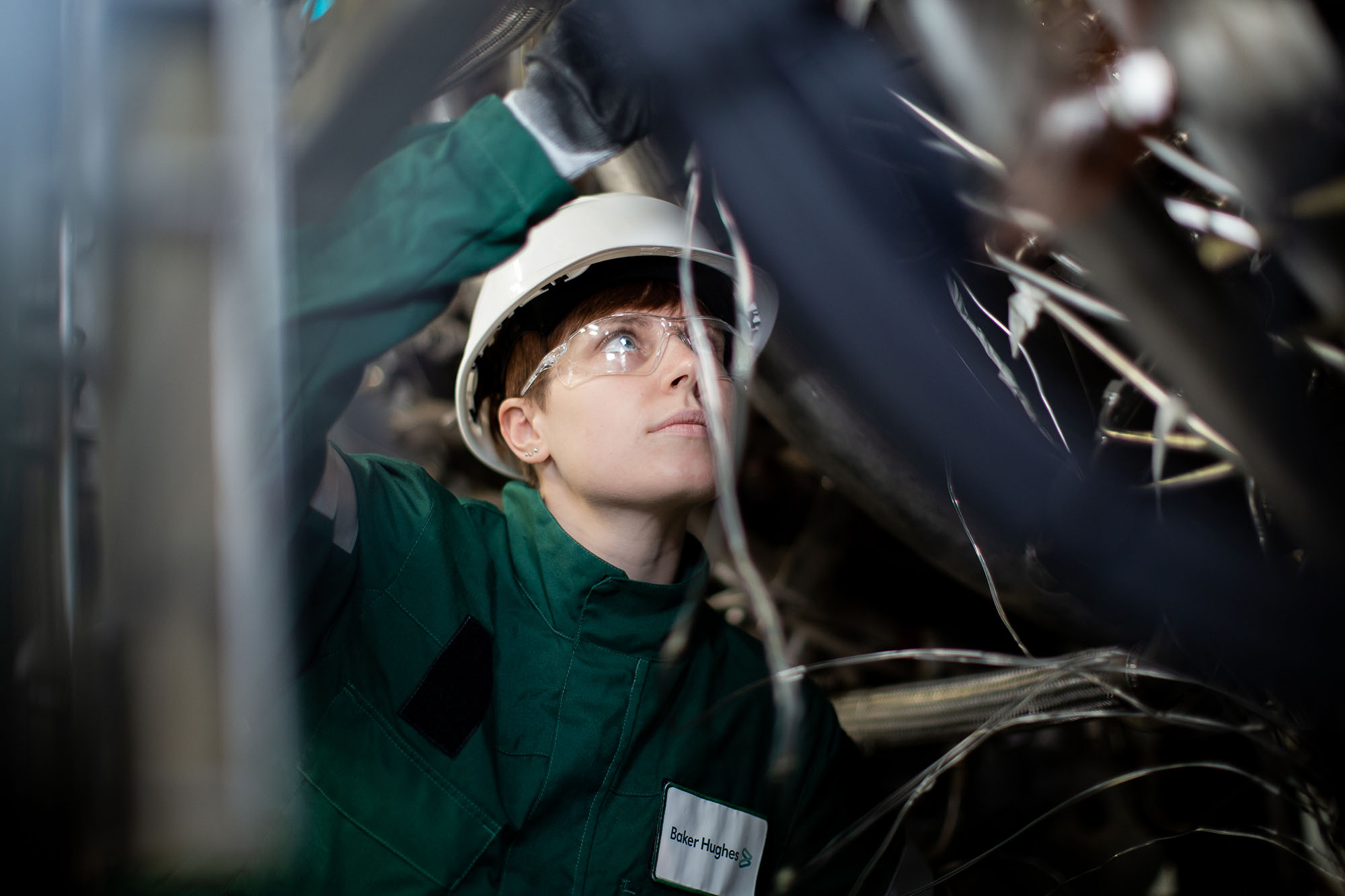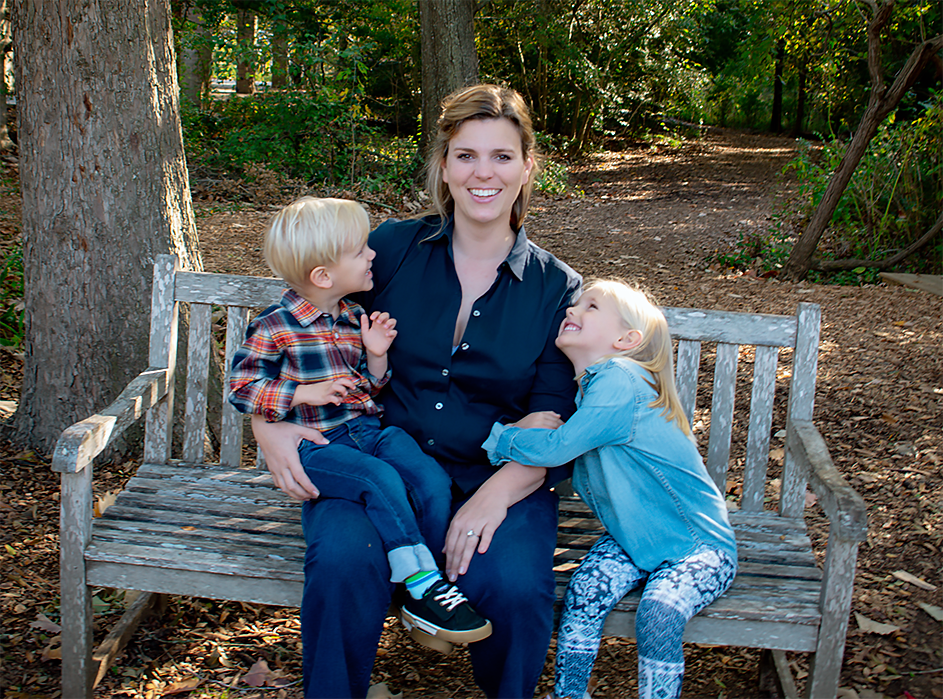Companies around the globe are getting to grips with emissions monitoring and reporting. Hiding high in supply chains and buried deep in customer use cases, Scope 3 emissions are the most elusive. Baker Hughes’ Emissions Excellence team has built a wealth of knowledge in scoping and accurately accounting for emissions over the past two-and-a-half years. Heidi Stehling, an industrial engineer with years of experience in all aspects of manufacturing at Baker Hughes, leads the group that is now in a position to foster an excellence-focused ecosystem — helping suppliers and customers to benchmark and reduce their greenhouse gas impacts on the planet.
I lead our Emissions Excellence team. We are the center of excellence for everything related to greenhouse gas emissions accounting.
Our main mission is to create processes and tools that enable the rest of the organization to calculate or account for greenhouse gas emissions across the entire value chain and across Scopes 1, 2, and 3 as defined by the Greenhouse Gas Protocol. So that's all of the emissions from our operations, upstream of our operations, and downstream of our operations, inclusive of the emissions from everything that we purchase, as well as the in-use emissions of all the technologies and solutions that we sell to our customers.
Then some of my team members are building a tool called the Fast LCA — or life cycle assessment — which looks at cradle-to-grave greenhouse gas emissions for individual products. Our Scope 3 is our customers’ Scope 1 and 2''.
Our Scope 3 is our customers’ Scope 1 and 2
Heidi Stehling, Emissions Excellence Leader, Baker Hughes
We also do deep emissions modeling. Our customers are increasingly interested in the greenhouse gas emissions of the products that we sell and the solutions and services we provide. Of course, our Scope 3 emissions, the emissions from the use of our products and services, equal our customers Scope 1 and 2 emissions, around which they have made aggressive commitments. So, our modeling helps our customers accurately assess their emissions.

It is a really exciting space, and Baker Hughes has two teams dedicated to the area of emissions. The emissions management team, led by Ben Linke, develops and applies our technologies to help the industry detect and reduce emissions, such as Lumen Terrain, Lumen Sky and flare.IQ. And then there is my team which is looking after the accounting of the emissions.
Baker Hughes does have a leadership position on emissions, both among its peers and in the industry in general. We consult with leaders at the Greenhouse Gas Protocol and the Science-Based Targets initiative (SBTi) about what we’re doing because it's so very new, and we’re all wrestling with the ambiguities.
It's a paradox, really, because the idea is to measure and establish a baseline so that you can quickly act to reduce emissions. That is, there’s no sense in understanding what all of your emissions are and doing it with a consistent methodology if your intention is not to reduce. But it's all so new that sometimes we’re figuring out how to do it to a standard while we're already reducing.
Baker Hughes has been reporting its greenhouse gas emissions to the Carbon Disclosure Project for 11 years. At our Annual Meeting in January 2019, Lorenzo Simonelli, Chairman and CEO of Baker Hughes, announced the company’s commitment, aligned to the Paris Agreement — to achieve net-zero greenhouse gas emissions by 2050, with a 50% reduction by the year 2030. With that, we all became energized to develop methodologies that would allow us to report truthfully on our emissions reductions, and this team quickly came together. Its remit then rapidly expanded beyond Scopes 1 and 2, which encompass everything within Baker Hughes’ operational control, such as emissions from our factories, our fleet of vehicles, and electricity consumption of our facilities; and moved beyond to include everything from our suppliers to the use of our products and even the treatment and the disposal of those products, or what happens after they reach the end of their useful life.

Emissions reduction is important to being a good steward to the environment and our precious planet. It's also a major competitive advantage for Baker Hughes. We're solving a really big problem, and we're helping our customers to do it. We help them understand what they're purchasing and their environmental impact from purchasing our product or solution. We talk about how we can work together on the application or the use of our products and solutions and develop really exciting technological advances — for example, how they can use cleaner fuel blends and otherwise reduce emissions from our solutions.
Our focus is to build out a robust process by which we can establish a baseline for all greenhouse gas emissions across the entire value chain and then identify and drive action to reduce emissions.
The Greenhouse Gas Protocol, to which we align, aims to provide guidance for accounting of Scopes 1, 2, and 3, but the standard doesn’t yet cover everything. There's really important work to be done to define saved and avoided emissions. As an industry, we can come together and establish the best way to calculate and define those two categories because if we're all measuring in different ways, without consistency, then where's the validity? Your reporting doesn't hold water.
There's really important work to be done to define saved and avoided emissions. As an industry, we can come together and establish the best way to calculate and define those two categories.
Heidi Stehling, Emissions Excellence Leader, Baker Hughes
So far, Baker Hughes has reported on just a part of our Scope 3 emissions — the part we understand well. Very importantly, we're now going out every day across the organization and partnering with everybody across the entire value chain to understand the full extent of Scope 3. It’s vital baselining work that also allows us to identify the hotspots: we might discover that we need to engage with a steel manufacturer because there are a lot of emissions from the processing of the raw material, or we identify that hiring all-electric cars for business travel instead of internal-combustion-engine vehicles can have a significant effect on our carbon footprint, or we see it will make a difference to fast-track the adaptation of our gas turbines to use higher concentrations of clean hydrogen in the fuel blends that drive them.
The most important work we're doing today is in understanding, and then this data can inform the business so that we can set targets around Scope 3 and really drive the action.
I have a four-year-old daughter, and she's very interested in ensuring that things go in the recycle bin and the compost bin and that the car engine stops when we’re paused at a traffic light or waiting for something. It's exciting now to be able to talk to her about my role in Emissions Excellence: that I'm working on reducing the pollution released into the environment, just like we do in our lives at home, and she says, “Oh yeah. That’s really cool.”
My personal passion is around the work we're doing on Scope 3 with our suppliers and the emissions from our factories inside Baker Hughes’ operations. The first 14 years of my now almost 16-year career were all steel-toed boots and jeans on the factory floor, where I worked as a manufacturing engineer with a team of machinists. I have a real love of being on the shop floor and coming together with our suppliers because our suppliers are an extension of Baker Hughes. We certainly can't effectively reduce our emissions on our own. So this inclusion and really tackling such an important problem together, that's the passion I have when I wake up in the morning.
Energy Forward Stories
Sign up to stay up to date on the latest innovations and people shaping the future of our industry.





